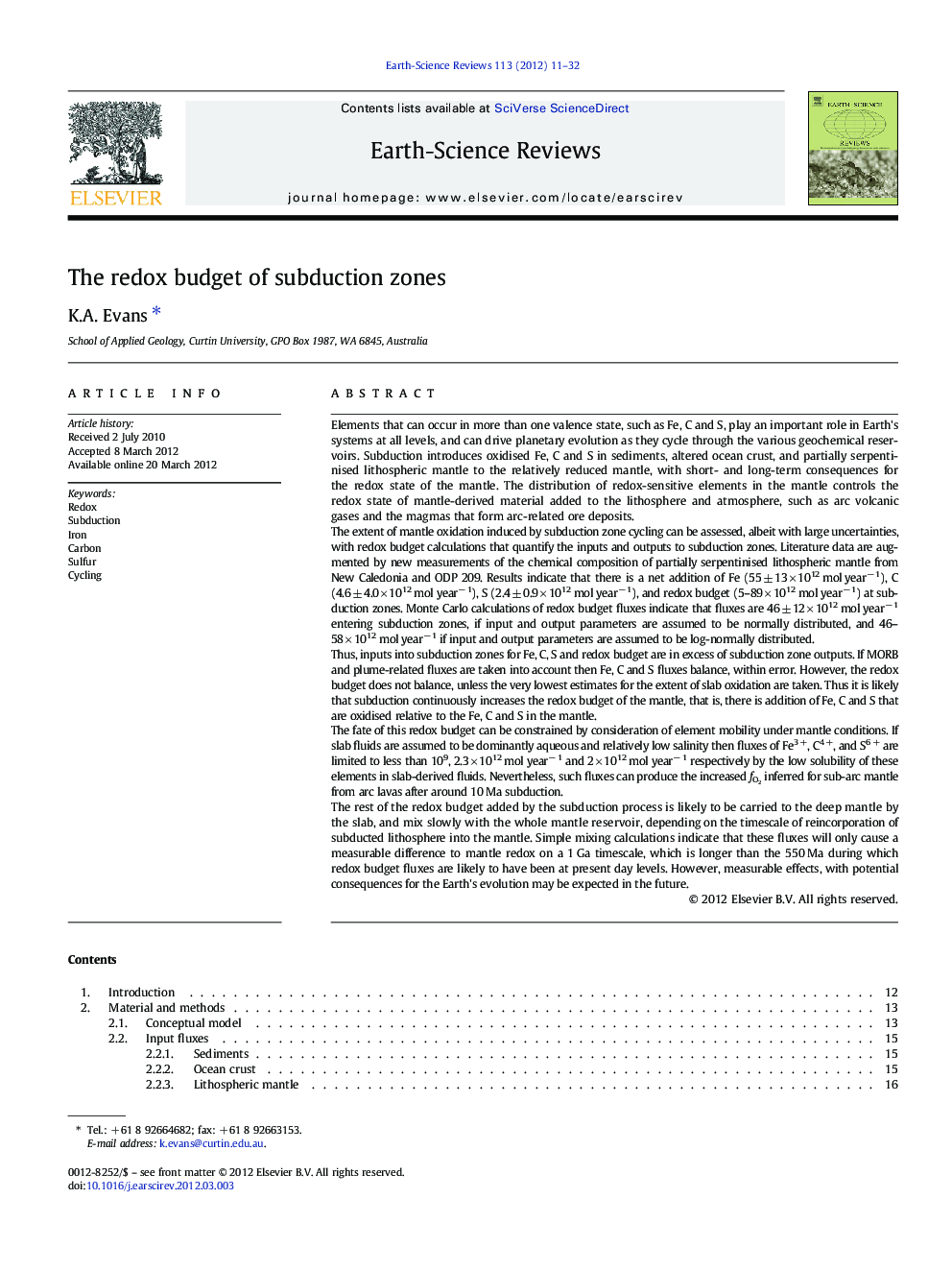| کد مقاله | کد نشریه | سال انتشار | مقاله انگلیسی | نسخه تمام متن |
|---|---|---|---|---|
| 4725925 | 1639991 | 2012 | 22 صفحه PDF | دانلود رایگان |

Elements that can occur in more than one valence state, such as Fe, C and S, play an important role in Earth's systems at all levels, and can drive planetary evolution as they cycle through the various geochemical reservoirs. Subduction introduces oxidised Fe, C and S in sediments, altered ocean crust, and partially serpentinised lithospheric mantle to the relatively reduced mantle, with short- and long-term consequences for the redox state of the mantle. The distribution of redox-sensitive elements in the mantle controls the redox state of mantle-derived material added to the lithosphere and atmosphere, such as arc volcanic gases and the magmas that form arc-related ore deposits.The extent of mantle oxidation induced by subduction zone cycling can be assessed, albeit with large uncertainties, with redox budget calculations that quantify the inputs and outputs to subduction zones. Literature data are augmented by new measurements of the chemical composition of partially serpentinised lithospheric mantle from New Caledonia and ODP 209. Results indicate that there is a net addition of Fe (55 ± 13 × 1012 mol year− 1), C (4.6 ± 4.0 × 1012 mol year− 1), S (2.4 ± 0.9 × 1012 mol year− 1), and redox budget (5–89 × 1012 mol year− 1) at subduction zones. Monte Carlo calculations of redox budget fluxes indicate that fluxes are 46 ± 12 × 1012 mol year− 1 entering subduction zones, if input and output parameters are assumed to be normally distributed, and 46–58 × 1012 mol year− 1 if input and output parameters are assumed to be log-normally distributed.Thus, inputs into subduction zones for Fe, C, S and redox budget are in excess of subduction zone outputs. If MORB and plume-related fluxes are taken into account then Fe, C and S fluxes balance, within error. However, the redox budget does not balance, unless the very lowest estimates for the extent of slab oxidation are taken. Thus it is likely that subduction continuously increases the redox budget of the mantle, that is, there is addition of Fe, C and S that are oxidised relative to the Fe, C and S in the mantle.The fate of this redox budget can be constrained by consideration of element mobility under mantle conditions. If slab fluids are assumed to be dominantly aqueous and relatively low salinity then fluxes of Fe3 +, C4 +, and S6 + are limited to less than 109, 2.3 × 1012 mol year− 1 and 2 × 1012 mol year− 1 respectively by the low solubility of these elements in slab-derived fluids. Nevertheless, such fluxes can produce the increased fO2 inferred for sub-arc mantle from arc lavas after around 10 Ma subduction.The rest of the redox budget added by the subduction process is likely to be carried to the deep mantle by the slab, and mix slowly with the whole mantle reservoir, depending on the timescale of reincorporation of subducted lithosphere into the mantle. Simple mixing calculations indicate that these fluxes will only cause a measurable difference to mantle redox on a 1 Ga timescale, which is longer than the 550 Ma during which redox budget fluxes are likely to have been at present day levels. However, measurable effects, with potential consequences for the Earth's evolution may be expected in the future.
Journal: Earth-Science Reviews - Volume 113, Issues 1–2, June 2012, Pages 11–32